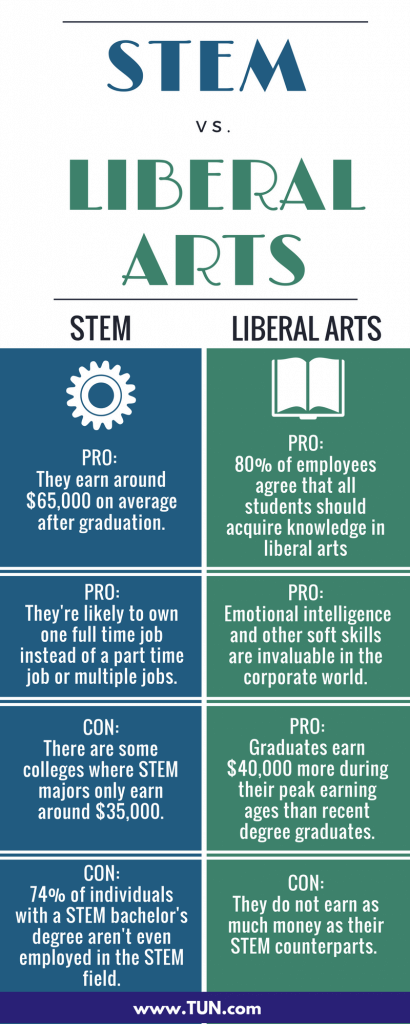*Updated June 30, 2020
With science and technology driving the future, many teachers are motivating their students to succeed in their science, technology, engineering and math (STEM) classes.
STEM has seen an increasing amount of attention in recent years.
Though many colleges haven’t seen the kind of art and music budget cuts that plague the public school system, liberal arts majors are often encouraged to choose a minor or a fall-back job in a STEM field, in case their career as a writer or an artist doesn’t work out.
Liberal arts majors have just as bright a future as STEM majors do, despite what many reports would have an individual believe. Both majors have their pros and cons.
Pros and cons of liberal arts majors
According to a report by the Association of American Colleges and Universities (AACU), 80 percent of employees agree that all students, regardless of their major, should acquire knowledge in the liberal arts and sciences.
Skills like critical thinking, emotional intelligence and other soft skills are invaluable to many employers.
There’s also the myth that liberal arts majors will make close to nothing once they graduate, while every STEM major will be rolling in the dough.
While it is true that liberal arts majors generally do not make as much as their STEM counterparts right out of college, liberal arts graduates earn $2,000 more than their STEM counterparts at their peak earning ages (56-60), according to the AACU. Additionally, they make nearly $40,000 more at their peak earning ages (56-60) than they did directly out of college (21-25).
Pros and cons of STEM majors
As for STEM, while there are some colleges, such as Alverno College in Wisconsin, where STEM majors only earn around $35,000, STEM majors make a lot of money for the most part.
A report by the Department of Education said that STEM majors on average earn $65,000 after graduation. They were also more likely to have just one full-time job, instead of a part-time job, or even multiple jobs.
However, the U.S. Census Bureau reported that in 2014, 74 percent of individuals who have a bachelor’s degree in a STEM major weren’t employed in the STEM field.
In conclusion
Both liberal arts and STEM majors have their pros and cons. Seeing as all college students are currently facing rising tuition costs and most students will have thousands of dollars in debt upon graduation, it’s important to weigh the pros and cons before choosing a major.




